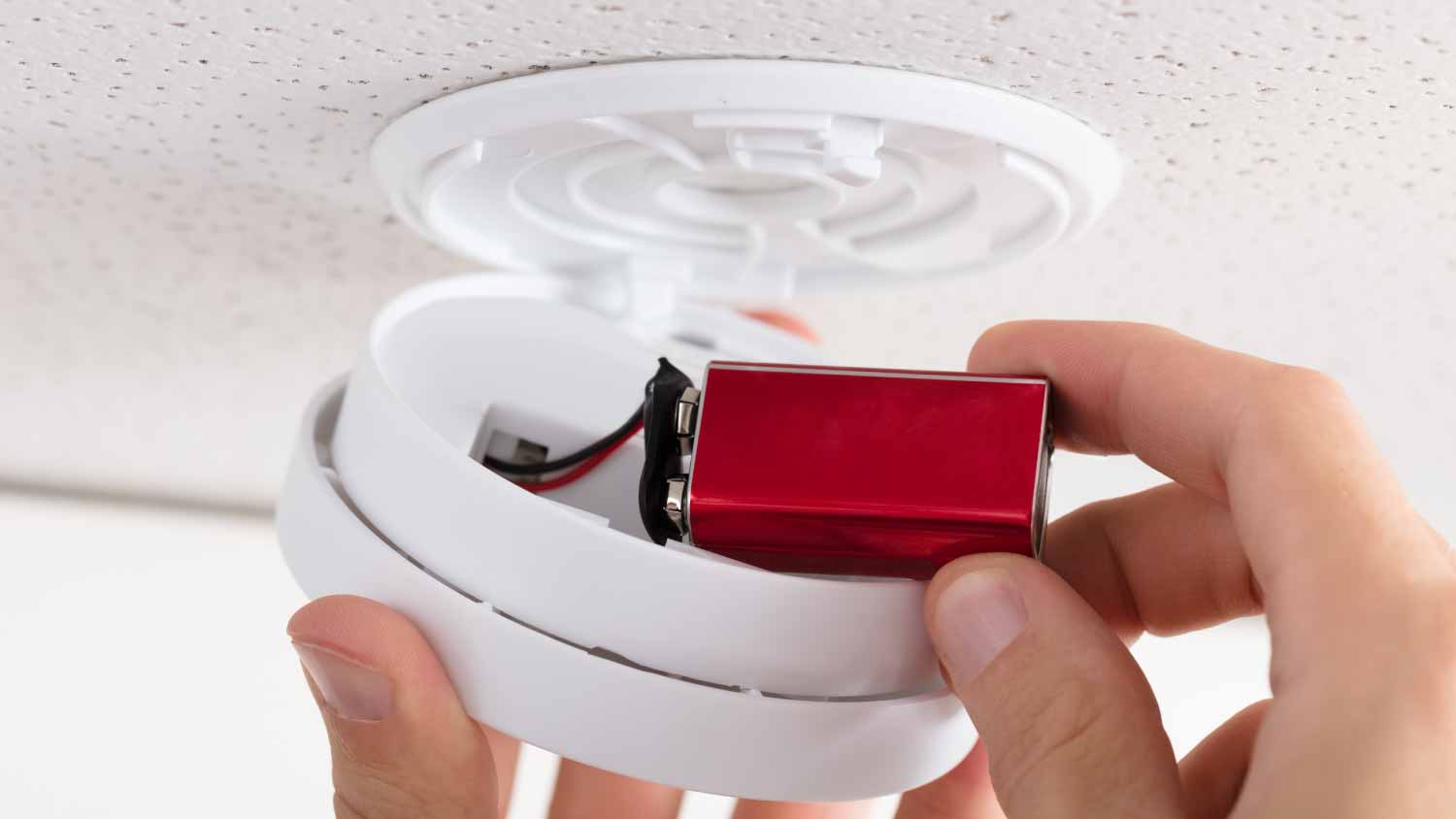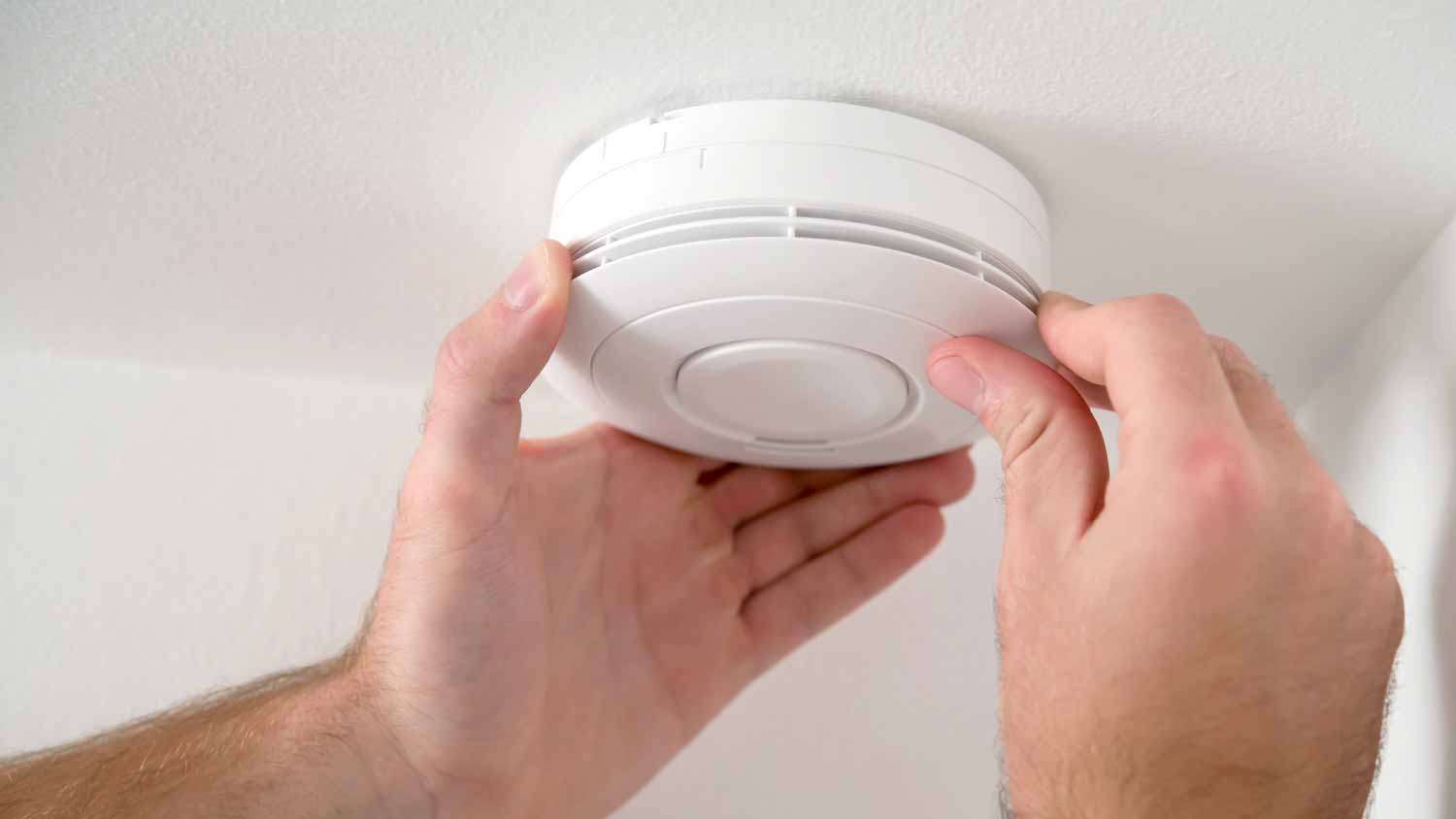
Feeling safe at home should always be a priority, and installing a new security system can help you do just that—no matter where you live.
Not every type of beep is an emergency, but all beeps should be addressed


A single beep usually means your carbon monoxide alarm’s battery is running low.
A chirping sound every 5 to 15 minutes could indicate a malfunction.
Continuous beeps signal dangerous carbon monoxide levels.
When there’s an emergency alarm, leave your home immediately and call 911.
When your carbon monoxide (CO) detector starts beeping, it’s easy to assume the worst. Carbon monoxide gas has no odor, color, or taste. These alarms can help us identify a serious gas leak—but they also come equipped with a few non-emergency signals. Though the pattern of beeps depends on the brand, this guide will help you learn why your carbon monoxide alarm is beeping and what it might actually mean.

A single beep from your carbon monoxide detector means the battery is running low. Depending on the brand, this beep may repeat every 30 seconds to a minute or it could be at random intervals as the battery slowly drains. This is not the same thing as a continuous beep, which is an emergency.
To get rid of the beep and ensure you have a working carbon monoxide detector, change the battery ASAP. How long the battery lasts depends on the type of detector:
Hardwired: These carbon monoxide detectors only use a battery as a backup in case of a power outage. Change the battery annually to prevent beeping.
Standalone: Standalone carbon monoxide detectors aren’t connected to your home’s electricity, so they’ll rely solely on battery power. Change the battery every six months to a year.
Most carbon monoxide detectors take AA, 9-volt, or AAA batteries, but some newer models use lithium batteries. Lithium batteries can last up to a decade, so you’ll need to listen for a chirp to know when you need a replacement.
Carbon monoxide detectors can last anywhere from five to 10 years. At the end of their lifespan, they will start to malfunction. This will result in beeping. The typical pattern that points to a malfunction is three to four consecutive beeps every five to 15 minutes, depending on the brand.
If your carbon monoxide detector is malfunctioning, replace it immediately. You may also want to replace any other carbon monoxide detectors in your home that are of a similar age to avoid more malfunctions. If your detector is hardwired, you’ll need to call a pro. The cost of installing a smoke and CO detector is usually around $115.
When there’s a dangerous level of carbon monoxide in your home, your detector will set off an emergency alarm. This usually sounds like a continuous set of four beeps in rapid succession, but it depends on the manufacturer. Any continuous and rapid beeping could signal danger.
If you hear an emergency alarm, evacuate the building immediately, find fresh air, and call 911. Do not re-enter your home until emergency services confirm that it’s safe. According to the CDC, symptoms of carbon monoxide poisoning are often described as flu-like and include headaches, dizziness, weakness, upset stomach, vomiting, chest pain, and confusion.
You can change the battery on an easy-to-reach carbon monoxide detector on your own, but many are mounted on ceilings or toward the top of walls. If you don’t have a ladder or aren’t comfortable, a local handyperson can help swap out batteries on standalone detectors. If you need to replace a hardwired unit, it’s best to hire an electrician near you. DIYing electrical work can be hazardous, especially if you’re doing it on a ladder.

If there’s no longer an emergency or you’ve just replaced the battery, you may need to reset your CO detector to stop the beeping. You can reset a smart detector using an app on your phone. Reset a traditional carbon monoxide detector by following these steps:
Make sure the battery is in place
Locate the button on the device that says “silence,” “test,” or “reset”
Hold it down for 5 to 10 seconds
Release the button
Once it’s reset, the LED lights on the device will blink or turn on. Some devices may emit a beep.
From average costs to expert advice, get all the answers you need to get your job done.

Feeling safe at home should always be a priority, and installing a new security system can help you do just that—no matter where you live.

A security camera system gives you peace of mind that there’s always a watchful eye on your home. Learn the costs of installing surveillance cameras.

Discover true smoke detector installation costs. Learn about average prices, cost factors, and tips to save on your smoke detector installation project.

Monitored vs. unmonitored home security systems: which can best defend your home from crime and other dangers? Learn the differences between these two products.

How often do you ask yourself, why does my fire alarm keep beeping? There are plenty of culprits behind such an issue and a number of easy fixes.

Home security begins at the front door. Check out our tips to improve your front entry door security as a barrier against unwanted intruders. There are many different strategies, from installing an entirely new door to an updated lock.